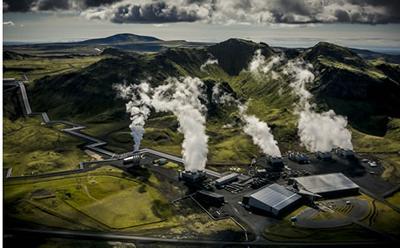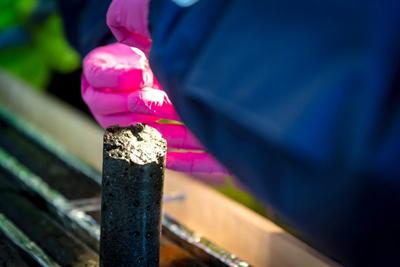Success for Clean Carbon as the CarbFix project makes headlines in the press and media

University of Southampton researcher Dr Juerg Matter, who is Associate Professor in Geo-engineering at Southampton's National Oceanography Centre, is the lead author on a study, published today in the distinguished peer reviewed journal Science , which describes a method of taking CO2 captured from the atmosphere, and turning it into solid rock.
The study shows how the CO2 can be safely sequestered by mixing it with water and injecting it into basaltic rocks, providing a way to undo some of the damage done by fossil fuel burning. The method permanently locks CO2 away from the atmosphere, via a mineralisation reaction that takes place, in suitable volcanic bedrock, when CO2 comes into contact with it. It was thought that this process of mineralisation would take hundreds or even thousands of years to complete, but the research; with partners: Columbia University, University of Iceland, University of Toulouse and Reykjavik Energy, shows that it can take as little as two years.
The location chosen for the research is important. Iceland is made up of 90 per cent basalt, a rock rich in elements required for carbon mineralisation. The researchers dissolved CO2 in water and then injected it into a well at the study site near the Hellisheidi geothermal power plant near Reykjavik where, upon contact with the target rocks (400-800 metres under the ground), the solution reacted with the surrounding basalt to form carbonate minerals.
The news has featured in the Guardian, the online BBC News, The Economist and other national and international media as reported on the CarbFix website.

“The overall scale of our study was relatively small," says Dr Juerg Matter, who leads the 'Sequestration' research theme for the University's Clean Carbon strategic research group. "So, the obvious next step for CarbFix is to upscale CO2 storage in basalt. This is currently happening at Reykjavik Energy’s Hellisheidi geothermal power plant, where up to 5,000 tonnes of CO2 per year are captured and stored in a basaltic reservoir.”
If your research lies in the area of any of our research themes why not consider becoming a member of the Clean Carbon USRG to receive regular updaets of our activities and early warning for our events?
Carbonate minerals do not leak out of the ground, thus our newly developed method results in permanent and environmentally friendly storage of carbon dioxide emissions. On the other hand, basalt is one of the most common rock type on Earth, potentially providing one of the largest carbon storage capacities. Storing carbon dioxide as carbonate minerals significantly enhances storage security which should improve public acceptance of Carbon Capture and Storage as a climate change mitigation technology